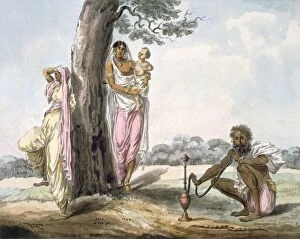Indian School Collection (#2)
"Exploring the Rich Heritage of Indian School
For sale as Licensed Images
Choose your image, Select your licence and Download the media
"Exploring the Rich Heritage of Indian School: From Mythology to Royalty" Immerse yourself in the captivating world of Indian art as we delve into the diverse collection of the Indian school. Witness the powerful depiction of "The Death of Bhishma, Mortally Wounded by Arjuna's Numerous Arrows, " where emotions are brought to life through intricate brushstrokes. Transport yourself back to 1893 with "Bala Krishna, " an oil painting on paper that portrays a tender moment between Lord Krishna and his devotees. Feel your heart race with excitement as you behold "The Abduction, " another masterpiece from 1893, which tells a tale of love and adventure. Marvel at the divine presence in "Brahma seated with Saraswati Brahma holding the Four Vedas and Saraswati Clutching a Lotus Petal. " This gouache artwork from 1650 showcases not only artistic brilliance but also spiritual symbolism. Discover architectural wonders through an intricately carved inscription panel that stands as a testament to India's rich cultural heritage. Admire its craftsmanship and marvel at how it narrates stories through every detail. Step into history with "Maharaja Gulab Singh on Lake Wular in Kashmir, " created around 1840. This exquisite piece, painted using gouache and gold paint on paper, captures both opulence and tranquility simultaneously. Witness education unfold before your eyes in "A Mullah and a Pupil. " The vibrant colors heightened with gold bring alive this scene from the 18th century, showcasing India's dedication to knowledge dissemination across generations. Be mesmerized by an enchanting red sandstone jali arch adorned with stellar motifs dating back to the 18th century. Its intricate design will leave you awestruck, reflecting India's mastery over architectural finesse. Indulge your senses in nature's paradise depicted in "A Princely Paradise" from the mid-18th century.





